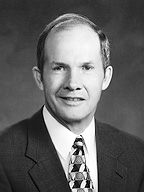“The Church in India, Pakistan, Bangladesh, and Sri Lanka,” Ensign, Nov. 1992, 104–5
The Church in India, Pakistan, Bangladesh, and Sri Lanka
LDS missionaries proselyted as early as the 1850s on what has sometimes been called the Indian subcontinent, but it is only in recent years that the Church has maintained a presence there. To learn how the gospel is spreading in India, Pakistan, Bangladesh, and Sri Lanka, the Ensign talked with Elder Monte J. Brough of the Seventy, Asia Area president, and Elders John K. Carmack and Tai Kwok Yuen of the Seventy, counselors in the area presidency.



Elder John K. Carmack Elder Monte J. Brough Elder Tai Kwok Yuen
Question: Can you tell us about the progress of the Church in India, Pakistan, Bangladesh, and Sri Lanka?
Answer: With 800 million people in India, as an example, the Church’s greatest strength is in its potential to grow. But we don’t fully know what that potential is yet. In these lands, we’re about at the stage where the Church was forty or fifty years ago in South America. We have comparatively few members, but they are faithful and devoted and willing.
Q: How many members do we have in these countries?
A: In India, we have 1,200 members. They are scattered all over the country, although the bulk of the members are in south central India. We have mission districts in Bangalore, Hyderabad, and New Delhi.
In Pakistan, the Church has seven units, with approximately 150 members. We have had nearly 60 baptisms there during the past year.
The first branch of the Church in Bangladesh was officially organized in Dhaka on March 14 this year. There are nearly 40 members in that country.
There is also a branch of the Church in Colombo, Sri Lanka; that island country has 112 members.
Q: Do people in these countries face special challenges when they join the Church?
A: Poverty is a great challenge to many persons in these countries. Also, because religious culture is so much a part of the life-style, it is difficult for a person to adopt a religion that has a different life-style. Peer pressure is sometimes a strong obstacle to those who would select a different religion.
Q: How are members doing in meeting these challenges?
A: Wherever the gospel takes root, regardless of the country or the circumstances in which people live, it has the same marvelous effect—to bless lives and bring joy. It changes people in India just as it does in Murray, Utah.
Q: Can you think of people who are examples of this growth?
A: There is a young man in India, Ebeneezer Solomon. His mother, who speaks no English, learned about the Church some years ago through one of the many missionary couples we have had in India. She came into the Church, and she brought her two sons in as well. Ebeneezer served a mission in India a few years ago. He is now married and currently serves as a counselor to the president of the Singapore Mission. Ebeneezer’s brother Samuel is president of the branch in Bangalore.
There are many others we could mention. There is a family in Lahore, Pakistan, who came into contact with the Book of Mormon several years ago. They gained testimonies of its truth and were recently baptized. And there is a brother in Pakistan whose life was changed through The Prophet Joseph Smith’s Testimony, a Church pamphlet that came into his hands.
We should also mention the contributions of our expatriate members—people from North America or Europe or other places who are living in these lands because of positions in government or business. In many cases, these people felt moved by the Lord to accept their present assignments and have found unexpected opportunities to serve. With their experience in the Church, they help strengthen the branches wherever they are, and they have been responsible for introducing many local people to the gospel. Their examples of devotion and service have been of immeasurable value to the local Saints.
Q: What do you see in the future of the Church in this part of Asia?
A: Continuing growth is the expectation, as the Spirit touches people and as we are able to reach them. In this huge vineyard, the laborers have been comparatively few, but they have served well. In addition to our couples, missionaries have included a number from Fiji who are of Indian descent. In January, we received the first North American full-time missionaries to serve in India in this century.
We’re trying right now to keep the Church as simple and basic as possible in all of these areas so that members won’t feel overwhelmed by organizational structure as they’re learning to grow in the gospel.
At one sacrament meeting in Bangalore, India, not long ago, a fourteen-year-old boy gave a fine sacrament meeting talk. His twenty-year-old brother conducted the meeting; it was as well prepared and organized as any Church meeting anywhere. In some of these areas where the Church is small and comparatively new, we’re developing strong leaders for the future.
There is another element that strengthens our efforts—families are still intact in these countries. This condition provides a natural tie to Church doctrines and principles, and it is one of the things that will help the Church to grow.